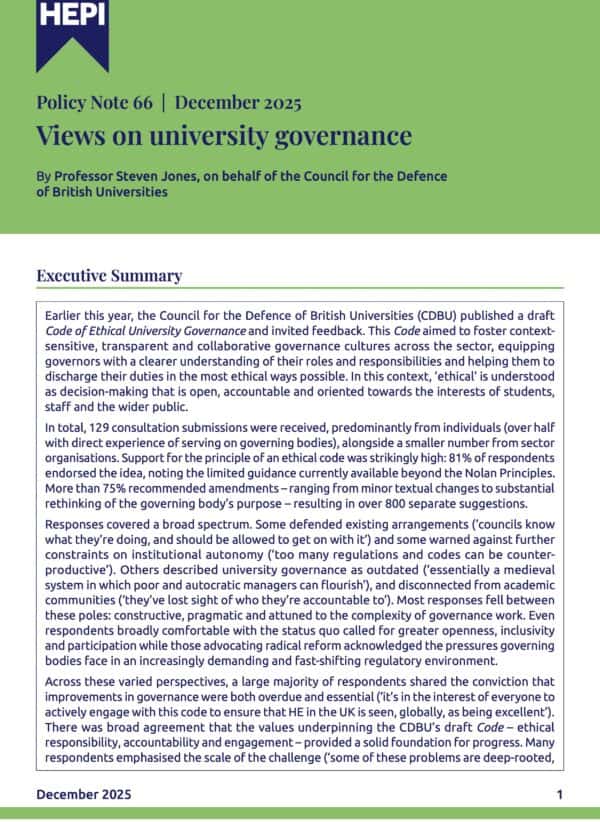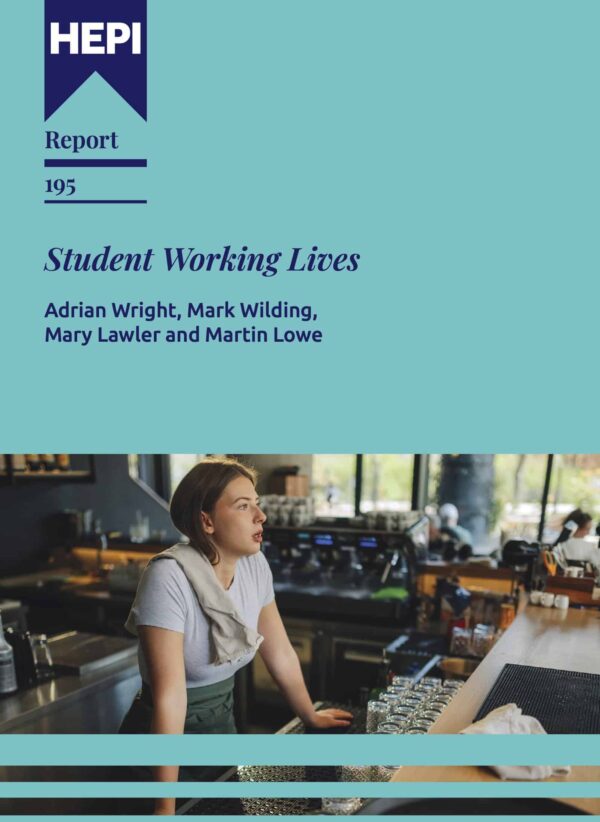When AI Meets Engineering Education: Rethinking the University
This HEPI blog was kindly authored by James Atuonwu, Assistant Professor at the New Model Institute for Technology and Engineering (NMITE).
Where machines of the past multiplied the strength of our hands, AI multiplies the power of our minds – drawing on the knowledge of all history, bounded only by its training data.
We are living through a moment of profound transition. The steam engine redefined labour, the computer redefined calculation, and now AI is redefining thought itself. Unlike earlier technologies that multiplied individual workers’ power, AI, particularly large language models (LLMs), multiplies the collective intelligence of humanity.
For engineering practice and universities alike, this shift is existential.
AI as Servant, Not Master
The old adage is apt: AI is a very good servant, but a very bad master.
- As a servant, AI supports engineers in simulation, design exploration, and predictive maintenance. For students, it provides on-demand access to resources, enables rapid testing of ideas, and helps them reframe problems.
- As a master, AI risks entrenching bias, undermining judgment, and reshaping educational systems around efficiency rather than values.
The challenge is not whether AI will change engineering education, but whether we can train engineers who command AI wisely, rather than being commanded by it.
This logic resonates with the emerging vision of Industry 5.0: a paradigm where technology is designed not to replace humans, but to collaborate with them, enhance their creativity and serve societal needs. If Industry 4.0 was about automation and efficiency, Industry 5.0 is about restoring human agency, ethics, and resilience at the heart of engineering practice. In this sense, AI in engineering education is not just a technical challenge, but a cultural one: how do we prepare engineers to thrive as co-creators with intelligent systems, rather than their servants
Beyond ‘AI Will Take Your Job’
The phrase ‘AI won’t take your job, but a person using AI will’ has become a cliché. It captures the competitive edge of AI literacy but misses the deeper truth: AI reshapes the jobs themselves.
In engineering practice, repetitive calculations, drafting, and coding are already being automated. What remains – and grows in importance – are those tasks requiring creativity, ethical judgment, interdisciplinary reasoning, and decision-making under uncertainty. Engineering workflows are being reorganised around AI-enabled systems, rather than human bottlenecks.
Universities, therefore, face a central question: Are we preparing students merely to compete with each other using AI, or to thrive in a world where the very structure of engineering work has changed?
Rethinking Assessment
This question leads directly to assessment – perhaps the most urgent pressure point for universities in the age of AI.
If LLMs can generate essays, solve textbook problems, and produce ‘good enough’ designs, then traditional forms of assessment risk becoming obsolete. Yet, this is an opportunity, not just a threat.
- Assessment must shift from recalling knowledge to demonstrating judgment.
- Students should be evaluated on their ability to frame problems, critique AI-generated answers, work with incomplete data, and integrate ethical, social, and environmental perspectives.
A further challenge lies in the generational difference in how AI is encountered. Mature scholars and professionals, who developed their intellectual depth before AI, can often lead AI, using it as a servant, because they already possess the breadth and critical capacity to judge its outputs. But students entering higher education today face a different reality: they arrive at a time when the horse has already bolted. Without prior habits of deep engagement and cognitive struggle, there is a danger that learners will be led by AI rather than leading it.
This is why universities cannot afford to treat AI as a mere technical add-on. They must actively design curricula and assessments that force students to wrestle with complexity, ambiguity, and values – to cultivate the intellectual independence required to keep AI in its rightful place: a servant, not a master.
Rediscovering Values and Ethics
AI forces a rediscovery of what makes us human. If algorithms can generate correct answers, then the distinctive contribution of engineers lies not only in technical mastery but in judgment grounded in values, ethics, and social responsibility.
Here the liberal arts are not a luxury, but a necessity.
- Literature and history develop narrative imagination, allowing engineers to consider the human stories behind data.
- Philosophy and ethics cultivate moral reasoning, helping engineers weigh competing goods.
- Social sciences illuminate the systems in which technologies operate, from environmental feedback loops to economic inequities.
In this light, AI does not diminish the need for a broad education – it intensifies it.
Reimagining the University
Yet, values alone are not enough. If universities are to remain relevant in the AI era, they must reimagine their structures of teaching, learning, and assessment. Several approaches stand out as particularly future-proof:
- Challenge-based learning, replacing rote lectures with inquiry-driven engagement in authentic problems.
- Industry and community co-designed projects, giving students opportunities to apply knowledge in practical contexts
- Interdisciplinary integration across engineering, business, and social perspectives.
- Block learning, enabling sustained immersion in complex challenges – a counterbalance to the fragmenting tendencies of AI-enabled multitasking.
- Professional skills and civic engagement, preparing graduates to collaborate effectively with both people and intelligent systems.
- Assessment through projects and portfolios, rather than traditional exams, pushing learners to demonstrate the judgment, creativity, teamwork and contextual awareness that AI can only imitate but not authentically embody.
These approaches anticipate what the AI era now demands of universities: to become sites of creation, collaboration, and critique, not simply repositories of content that AI can reproduce at scale. Some newer institutions, such as NMITE, have already experimented with many of these practices, offering a glimpse of how higher education can be reimagined for an AI-enabled world.
Closing Reflection
AI may be the greatest machine humanity has ever built – not because it moves steel, but because it moves minds. Yet, with that power comes a reckoning.
Do we let AI master our universities, eroding integrity?
Or do we make it serve as a co-creator, multiplier of human intelligence, and a tool for cultivating wise, ethical, creative engineers?
The answer will define not just the future of engineering training and practice, but the very shape of university education itself.






Comments
Okenna Obi-Njoku says:
A very well-thought out and well-written article.
One would wonder how long it will take before the next leap in knowledge happens.
Reply
Sandy Pepper says:
What an excellent article, thank you.
Reply
Add comment